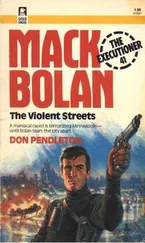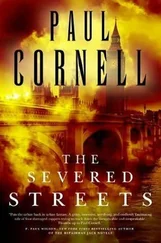But Edgerton didn’t fight back, and eventually Bert Silver had half the desk. In his heart of hearts, Harry Edgerton knows that is as it should be. Then again, this young thing writing an incident report at the dining room table is no Bert Silver. Despite the older officer’s assurance, Edgerton takes the uniform aside and speaks softly.
“If she’s the first officer, she’s going to have to wait for the crime lab and then do the ECU submissions.”
The comment is almost an open question. More than once a medical examiner has turned a seeming suicide into a murder, and God knows it won’t do to have some recent academy product tangling up chain-of-custody on every item submitted to evidence control. The uniform understands without another word spoken.
“Don’t worry. We’ll walk her through it,” he repeats.
Edgerton nods.
“She’ll be okay,” the officer says, shrugging. “Hell, she’s more on the ball than some we’re seeing.”
Edgerton opens his small steno pad and walks back into the dining room. He begins asking both uniforms the standard questions, pulling together the raw material for a death investigation.
On the first page, dated 26 Jan. in the upper right corner, the detective has already recorded the details of his own notification by a police dispatcher at 1:03 P.M.: “1303 hours/Dispatch #76/serious shooting/5511 Leith Walk.” Two lines below that, Edgerton has recorded his time of arrival at the scene.
He adds the name of the young female officer, her unit number and time of arrival. He asks for the incident number, 4A53881-4 representing the Northeastern District, A signifying the month of January, the remaining digits the basic tracking number-and writes that down as well. Then he records the number of the city ambulance unit that responded and the name of the medic who pronounced the victim. He finishes off the first page with the time of the ambo crew’s pronouncement.
“Okay,” says Edgerton, turning to take his first interested look at the dead man. “Who do we have here?”
“Robert William Smith,” says the red-faced officer. “Thirty-eight, no… thirty-nine years.”
“He lives here?”
“He did, yeah.”
Edgerton writes the name on the second page followed by M/W/39 and the address.
“Anyone here when it happened?”
The female officer speaks up. “His wife called nine-one-one. She said she was upstairs and he was down here cleaning his shotgun.”
“Where is she now?”
“They took her to the hospital for shock.”
“Did you talk to her before she left?”
The woman nods.
“Write what she told you in a supplemental report,” Edgerton says. “Did she say why he might’ve killed himself?”
“She said he has a history of mental problems,” says the red-faced officer, breaking in. “He just got out of Springfield Hospital on the eleventh. Here’s his commitment papers.”
Edgerton takes a creased green sheet of paper from the officer and reads quickly. The dead man was undergoing treatment for personality disorders and-bingo-suicidal tendencies. The detective hands the paper back and writes two more lines in his notepad.
“Where did you find that?”
“His wife had it.”
“Is the crime lab on the way?”
“My sergeant called them.”
“How about the medical examiner?”
“Lemme check on that,” says the officer, walking outside to key his radio. Edgerton throws his notepad on the dining room table and pulls off his overcoat.
He does not move directly toward the body but instead walks around the perimeter of the living room, looking along the floor, walls and furniture. For Edgerton, it has become second nature to begin at the periphery of the crime scene, moving toward the body in a slowly shrinking circle. It is a method born of the same instinct that allows a detective to walk into a room and spend ten minutes filling a notepad with raw data before taking a serious look at the corpse. It takes a few months for every detective to learn that the body is going to be there, stationary and intact, for as long as it takes to process the crime scene. But the scene itself-whether it happens to be a street corner, automobile interior or living room-begins to deteriorate as soon as the first person finds the body. Any homicide detective with more than a year’s experience has already collected one or two stories about uniformed men walking through blood trails or handling weapons found at a murder scene. And not just the uniforms: More than once a Baltimore homicide detective has arrived at a shooting scene to discover some major or colonel wandering through a fresh scene, pawing the shell casings or going through a victim’s wallet in a determined effort to put prints on every conceivable bit of evidence.
Rule Number Two in the homicide lexicon: The victim is killed once, but a crime scene can be murdered a thousand times.
Edgerton marks the direction of spatter from the body, reassuring himself that the spray of blood and brain matter is consistent with a single wound to the head. The long white wall behind the sofa and to the dead man’s right is marred by one red-pink arc extending upward from a half foot above the victim’s head to nearly eye level at the front door frame. It is a long, curled finger of individual spatters that seems to point, in its final trajectory, toward the piece of ear near the welcome mat. A smaller arc extends across the top cushions of the sofa. In the small space between the sofa and the wall, Edgerton finds a few shards of skull and, on the floor just below the dead man’s right side, much of what had once occupied the victim’s head.
The detective looks closely at several of the individual spatters and satisfies himself that the blood spray is consistent with a single wound, fired upwards, into the left temple. The calculation is a matter of simple physics: A blood droplet that strikes a surface from a 90-degree angle should be symmetrical, with tentacles or fingers of equal length extending in any and every direction; a droplet that strikes a surface at an odd angle will dry with the longest tentacles pointing in a direction opposite the source of the blood. In the case at hand, a blood trail or spatter with tentacles pointing in any direction other than from the victim’s head would be hard to explain.
“Okay,” says the detective, pushing back the coffee table to stand directly in front of the victim. “Let’s see what you’re about.”
The dead man is nude, his lower half wrapped in a checkered blanket. He is seated in the center of the couch, with what remains of his head resting on the back of the sofa. The left eye stares at the ceiling; gravity has pulled the other deep into its socket.
“That’s his federal tax form on the table,” says the red-faced uniform, pointing to the coffee table.
“Oh yeah?”
“Check it out.”
Edgerton looks down at the coffee table and sees the familiar cover page of a 1040.
“Those things drive me crazy, too,” says the uniform. “I guess he just lost his head.”
Edgerton moans loudly. It is still too early in the day for unchecked constabulary wit.
“He musta been itemizing.”
“Police,” Edgerton repeats, “are sick fucks.”
He looks at the shotgun between the victim’s legs. The 12-gauge is resting with its stock on the floor, barrel upward, with the victim’s left forearm resting on the upper barrel. The detective gives the weapon a once-over, but the crime lab will need a photograph, so he leaves the gun resting between the victim’s legs. He takes the dead man’s hands in his own. Still warm. Edgerton convinces himself that death was recent by manipulating the ends of the fingers. Every now and then, some irate husband or wife wins the argument by shooting the significant other and then spends three or four hours wondering what to do next. By the time they seize on the notion of staging a suicide, the victim’s body temperature has dropped and rigor mortis is evident in the shorter facial and finger muscles. Edgerton has had cases where the killers caused themselves much useless aggravation by attempting to push the rigid fingers of the not so recently departed inside the trigger guard of a weapon, an effort that fairly screams foul play by giving the body the appearance of a department store mannequin with a prop glued to its ungrasping hand. But Robert William Smith is one very fresh piece of meat.
Читать дальше












